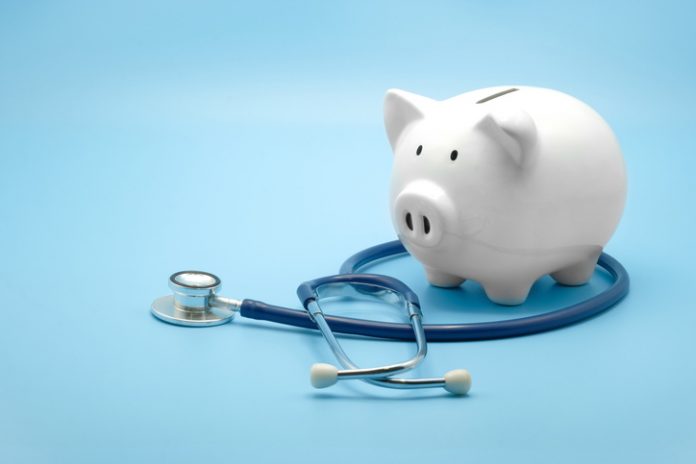By Robert Koshnick, M.D.
People could manage their health care spending if they had the means to directly pay for it. That could re-establish a consumer-friendly, cost-effective medical market without the added cost of third-party payers who limit patients’ choices.
Prices would then be more in line with the real value of health care. Journalist John Cassidy famously commented that “By allowing millions of decision-makers to respond individually to freely determined prices, the market allocates resources—labor, capital, and human ingenuity—in a manner that can’t be mimicked by a central plan, however brilliant the central planner.”
Empower-Patient Accounts
I propose what I call Empower-Patient Accounts (E-PA). E-PAs would be like health savings accounts (HSA) without the requirement of having a high-deductible health plan. People could access the money in their E-PA through a smart credit card. The associated financial institution would be responsible for limiting its use to qualified medical expenses
See Empowering People Option Act
Subsidies would be means-based. Lower-income people, those who earn two-thirds of the average income, would receive a flat E-PA subsidy of $3,000, adjusted over time for inflation. People who earn between two-thirds and two times the average income would receive a $1,500 subsidy and a tax deduction for $1,500 they could contribute to the account directly. Individuals who earn twice the average income or more could contribute $3,000 into their account and receive a tax deduction for all of it.
The funding for E-PAs would be high enough to give people the means to sign up for unrestricted access to primary care through direct primary care and/or pay for such things as medical office visits, deductibles, copayments, coinsurance, and generic drugs. People paying directly for medical care would care about price transparency and would force medical care providers to adopt transparent pricing.
E-PA + HSAs
People could have HSAs funded in the same way. The 2023 limits for contributions to an HSA are $3,850 per individual or $7,750 for family coverage. The government could fund HSAs for low-income people; half-fund them, but make the other half tax deductible, for middle-income people; and make the whole amount tax deductible for upper-income people.
People would then have two options to pay for health care. They could have individually controlled E-PA and HSA accounts that they own as financial assets to manage their medical care. Or they could continue to have third-party payer insurance that limits their choices and inflates costs.
Individuals choosing an E-PA and HSA would own those accounts. They would have a financial incentive to maintain healthy behaviors and habits and would determine health care spending as they see fit. Upon death, their heirs could inherit unspent funds that could build family wealth.
Individuals with Pre-existing Conditions
Those with pre-existing conditions might choose to stay on their current health insurance plan instead of choosing E-PA+HSA. But a federal re-insurance program might make E-PA+HSAs a favorable choice even with pre-existing conditions.
States like Minnesota have shifted federal funds to offset the cost of the highest-risk individuals in the individual market. This had the effect of reducing premiums in the overall private insurance market. Private insurance coverage expanded to over 80,000 individuals when Minnesota instituted re-insurance. Minnesota went from 37th place in health insurance affordability in 2017 to third place in 2021—a historic low, according to the state health department—after instituting the reinsurance program.
Congress could do nationally what Minnesota did. A national re-insurance program could pay part of individual claims disproportionately higher than average. E-PAs and HSAs along with a federal reinsurance program could reduce the effect of pre-existing conditions as a problem by reimbursing insurers for people with high medical care use.
Other safeguards, such as the Federally Qualified Health Centers, federal end-stage renal disease and ALS programs, the Children’s Health Insurance Program (CHIP), and nonprofit programs such as Lend a Hand Up would still exist.
Prospects for Reform
A colleague told me this was the best solution he had heard but had words of caution. “It will be opposed by the managed care and insurance industry and by public advocates,” he said.
It is possible the insurance industry and public advocates might like the idea of individually controlled accounts. Managed care companies that reap billions of tax dollars from ever-expanding Medicaid might object.
My colleague said, “I hope there will be enough forces for good to overcome the inevitable resistance to change.” I hope so, too.
People empowered with E-PAs and HSAs would drive costs lower, force improved performance and quality, incentivize innovation, and demand a reduction in costly administrative inefficiencies. Medicine would need to be “patient-friendly” to keep old and attract new patients.
Re-establishing a direct patient-physician relationship could attract more people into primary care vocations that through incremental care make the biggest difference in people’s health outcomes. Medicine might again become an enjoyable profession with lower burnout rates. U.S. health care could once more be the envy of the world.
Robert Koshnick, M.D. (bob.koshnick@gmail.com) is a retired primary care physician from Detroit Lakes, MN. He is chair of the policy committee of the Minnesota Medical Association and author of Empower-Patient Accounts Empower Patients!
This article was revised on May 15, 2023
For related articles:




















